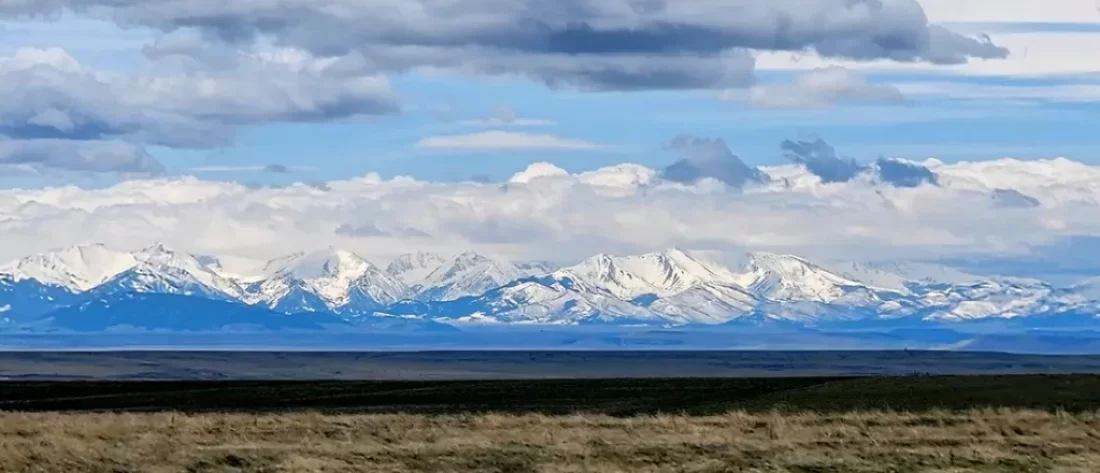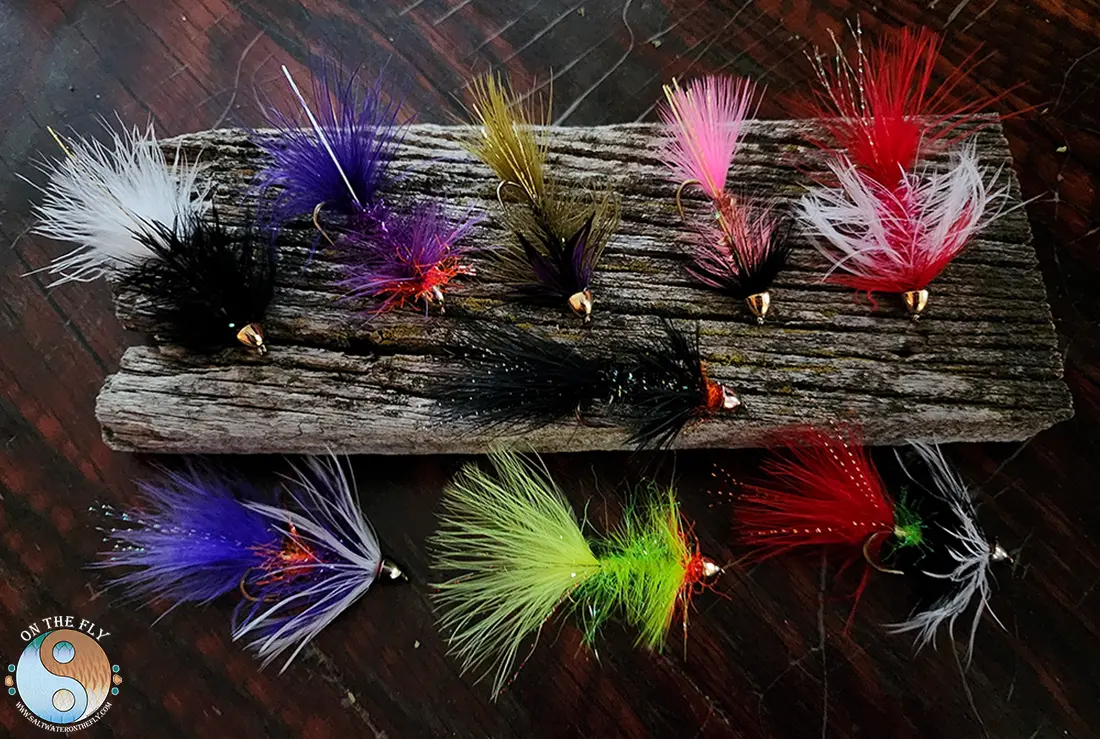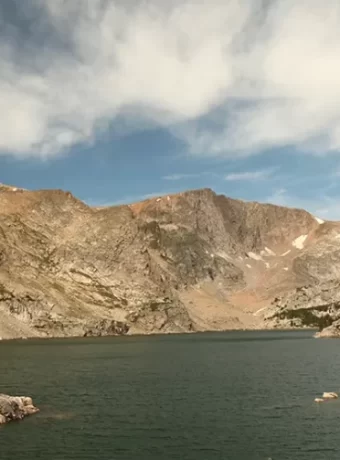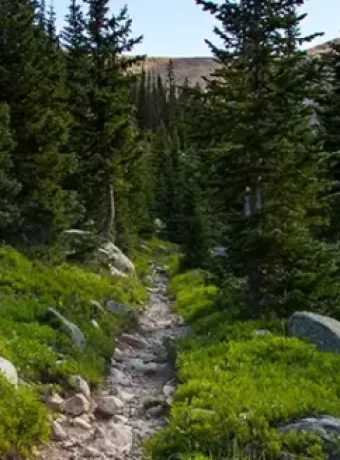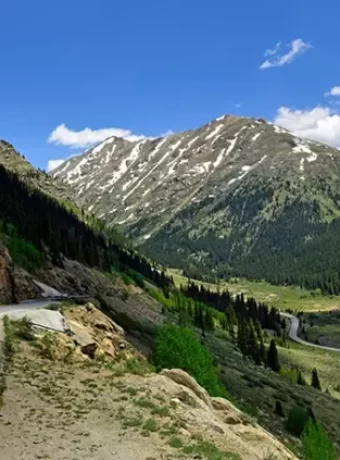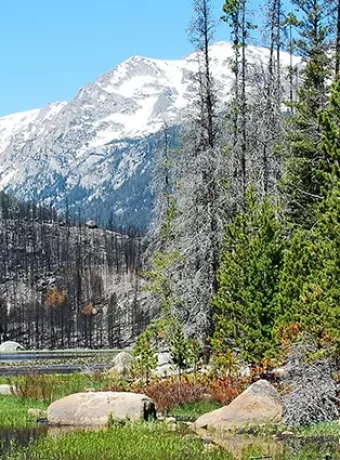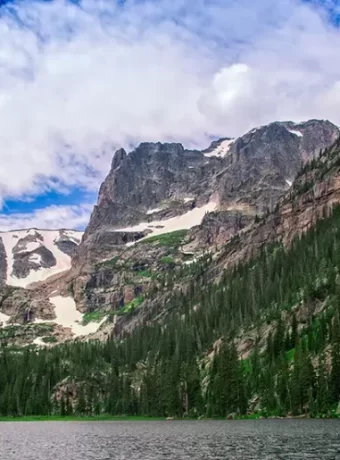Discover the Crazy Mountains Wilderness Montana
Crazy Mountains Wilderness Area Montana is a captivating landscape with a story etched in time. For thousands of years, humans have interacted with this environment. Imagine a place where the echoes of the past meet the challenges of the present.
You might have caught a glimpse of this stunning mountain range while driving by. However, you might not know the complex issues surrounding it. The Crazy Mountains Wilderness is an Island Mountain Range in Montana, has been profoundly shaped by human actions and competing interests.
Table of Contents
Native American Ties to the Crazy Mountains
Native American tribes, including the Crow, Blackfeet, and Shoshone, lived in these mountains for generations. They hunted, gathered food, and found spiritual significance in this area. This land holds deep meaning for them.
The Apsáalooke (Crow) people maintain a powerful connection to the mountains, which they call Awaxaawippíia. These mountains are incredibly important to their culture. Tribal members’ stories, traditions, and experiences, such as vision quests conducted since time immemorial, demonstrate this bond.
Protecting Indigenous Culture
Tribal members continue to practice their traditions, including vision quests and other ceremonies. These are all passed down through generations. The Custer Gallatin National Forest plan acknowledges this, designating it as “an area of tribal importance.”
The mountains are more than just geological features. They represent the very foundation of Apsáalooke origin stories. Oral histories vividly describe how the mountains came to be in their present form.
A Change in Times with Westward Expansion
The early 1800s marked a turning point with the arrival of European explorers. This eventually led to the displacement of the original inhabitants. The Lewis and Clark Expedition passed nearby in 1806.
Fur trappers followed, and settlers were drawn by the promise of fertile land and abundant resources. Resource depletion became a growing concern. Then, settlers arrived, further seeking resources and land.
The Mining and Logging Boom
The late 19th and early 20th centuries brought another shift, with the discovery of gold, silver, and copper. This led to a mining rush. Timber companies began harvesting trees, significantly impacting the landscape.
This put a strain on natural resources, raising concerns about long-term sustainability. The environmental impact of these activities became increasingly evident. It was clear that something needed to change.
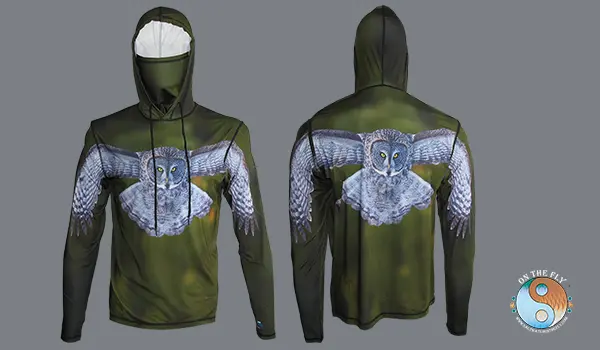
Graphic Hoodie Great Grey Owl
outdoor apparel in Graphic Hoodies for hiking, fishing, camping or just hanging out. Hoodies are a UPF-50 with added protection from a sewn in facemask. In our outdoor series a Great Grey Owl and a Yellowstone Bison.

Graphic Hoodie Yellowstone Park Bison
Come explore central Montana. The best Musky Fly Fishing in the state. Hiking, Mountain Biking, Camping, Music Festivals, the fun never ends.
The Checkerboard Challenge in Crazy Mountain Wilderness
A major challenge in the Crazy Mountains is the “checkerboard” land ownership. This pattern resulted from land grants to the Northern Pacific Railroad. These grants created an alternating pattern of public and private sections.
This has caused escalating disagreements over access rights, particularly regarding historically used trails. The Public Land Water Access Association (PLWA) has gathered extensive data on this issue. They are trying to work on public access to public land.
My personal thoughts are the Forest Service screwed the public over on this one, either through complete ineptness or corruption. Take your pick.
Access Disputes and Resolutions
Disputes intensified in the 1940s and remain unresolved. Some private landowners began restricting public access to historic routes. This continues to be a contentious issue in the community and media.
In 2017, a Yellowstone District Ranger was removed from their position. This came after pressure to cease advocacy efforts. Landowners reportedly complained to Senator Steve Daines and other officials about this situation.
The Fight for Public Access to the Crazy Mountains
Access has always been the central issue in these conflicts. A notable case involved the Big Elk Canyon issue in 2001, with significant involvement from organizations like PLWA. It has been a very large focal point.
They are researching the specifics of “Crazy Mountains Public Access trails”. Various groups hold differing views on how access should be managed. This creates many disagreements between them.
Crazy Mountains Land Swaps
Several land exchange proposals are underway, including the proposed “South Crazy Mountains Land Exchange”. These aim to consolidate public land in the Crazies. They also secure public access by consolidating ownership, especially around the Porcupine Lowline Trail.
The Park County Environmental Council (PCEC) has played a role in these efforts. The Crazy Mountain Access Project (CMAP), launched in 2020, is an example. It serves as a community-building campaign to address ongoing access issues and get people on the same page.
|
Crazy Mountain Land Exchange Summary |
||
|
Proposal |
Status |
Details |
|
South Crazies Land Exchange |
Completed in 2021 |
Exchanged 1,920 acres of national forest land for 1,877 acres of private land. This includes land in the southern portion of the range. |
|
East Crazies Inspiration Divide Land Exchange |
Under Review |
The Preliminary Environmental Assessment was released, accepting public comments until December 23, 2022. This assessment concerns the East Crazy Inspiration Divide Land. It seeks to add more odd numbered sections to public land in the East Crazies. |
The East Crazies Inspiration Divide Land Exchange looks to change things for the better in that specific area. It would change the dynamic around the East Crazy Inspiration Divide Land for many in the area and across Montana.
Recreation in the Crazy Mountain Wilderness Montana
The Crazy Mountains Wilderness offers diverse activities, and the resolution would affect various users. Hiking, backpacking, fishing, and hunting are all popular. These are great ways to get out and enjoy the area.
Over 100 miles of trails exist. The wilderness features a trail leading to Crazy Peak. This provides panoramic views, that go on forever, to hikers. For backpackers, the Crazies provide many remote campsites to enjoy the views.
Trout fishing is also popular. Various species are found in lakes and creeks, offering anglers options from lakes like Campfire Lake to rivers like the Yellowstone River. It is not too far of a drive from areas, such as Harlowton, Stillwater River or Yellowstone National Park. Fly Fish a Livingston Spring Creek.
Looking for food, my recommendations: Musselshell Steakhouse, Cafe 191, Klo’s Kitchen Harlowton, Bakery Big Timber, Big Timber Bar for a really good burger. Breweries Gally’s Brewing Company is my favorite, though Crazy Peak in Big Timber has Good Brews as well.
Hiking to Crazy Peak
Crazy Peak is the highest point in the Crazy Mountains. It reaches an elevation of 11,214 feet. It’s a tough but amazing hike. This hike is not for beginners. But if you’re up for a challenge, it’s worth it.
The most popular route to Crazy Peak starts at the Crazy Mountains Trailhead. This trailhead is about 30 miles west of Harlowton, Montana. From the trailhead, the trail climbs steadily through forests and meadows. You’ll gain over 4,000 feet in elevation. This makes it a strenuous climb. The trail is well-marked. But it’s always a good idea to bring a map and compass or a GPS device.
As you climb, you’ll be rewarded with awesome views. You’ll see the surrounding mountains and valleys. The final push to the summit is steep and rocky. But the panoramic views from the top are amazing. On a clear day, you can see for miles in every direction.
Here are some important things to keep in mind if you plan on hiking to Crazy Peak:
- It’s a long and strenuous hike, so be prepared for a full day on the trail.
- The weather in the Crazy Mountains can change quickly, so be prepared for all types of conditions.
- Bring plenty of water and snacks.
- Be aware of wildlife, especially bears and mountain lions. Carry bear spray and know how to use it.
- Leave no trace. Pack out everything you pack in.
- Let someone know your hiking plans before you go.
The Crazy Mountains Wilderness is a beautiful and rugged area. It’s located in Montana. This area is great for hiking and backpacking. You can enjoy fishing in the alpine lakes and streams. The Crazy Mountains are a great place to explore. The mountains are home to a variety of wildlife. These include elk, deer, bighorn sheep, and mountain goats. Although challenging, the Crazy Peak hike offers amazing scenery. The climb makes it an unforgettable experience for any serious hiker.
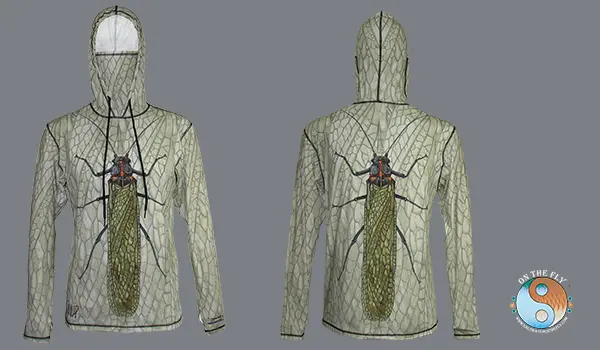
Graphic Hoodie Salmonfly
Salmonfly hatch is a great experience, our Graphic Salmonfly Hoodie and Salmonfly Leggings. Relive that day in salmonfly fish camo designed those on the go.
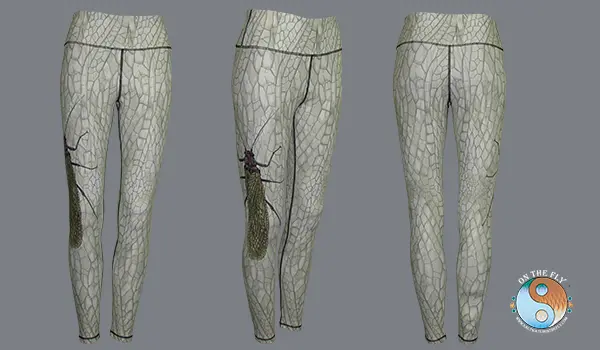
Graphic Leggings Salmonfly

Nine Foot, Six Weight Fly Rod
Fly fishing the area a 9′ 6-weight fly rod will do the trick. Start to fly fish for Musky move up a nine foot – ten weight fly rod.
Fly Fishing Lakes in Crazy Mountains
The Crazy Mountains are a tucked-away gem in Montana. They offer amazing fly fishing. Crystal-clear lakes and streams are sprinkled throughout the wilderness. These spots are perfect for catching trout. This section will cover some great places to cast your line. So, grab your gear and get ready to explore.
Crazy Mountains Lake is a must-fish spot. It sits high in the mountains. The lake is surrounded by beautiful peaks. It’s home to westslope cutthroat trout. Brook trout also call this lake home. The clear water makes sight fishing a real thrill. But it can be tricky! The trout can see you coming. Stealth and the right fly are key. A slow, delicate approach will increase your chances of success.
Another great option is Sweetgrass Lake
- Elevation: 8,800 ft
- Fish Species: Rainbow trout, cutthroat trout, and whitefish
- Access: Easy, 2-mile hike from the trailhead
- Description: Sweetgrass Lake is a popular destination for fly fishermen, with an abundance of rainbow trout and cutthroat trout. The lake’s shallow waters and weed beds make it an ideal spot for dry fly fishing.
. This lake is off the beaten path. It’s perfect for those who like solitude. You’ll find rainbow trout here. Brook trout also swim in these waters. The lake’s quiet setting makes for a peaceful fishing trip. Try using dry flies. They can be really effective here, especially during the summer months. This spot is perfect for a relaxing day of fishing. You can escape the crowds and enjoy nature’s beauty.
If you’re up for some hiking, fish the upper reaches of the streams. These smaller streams and creeks hold brook trout. These feisty fish might be small, but they are a blast to catch. Look for pockets of deeper water. This is where the trout like to hang out. A small, lightweight fly rod is best for these tight spots. The hike in can be tough. But the fishing is worth it!
Remember to get a Montana fishing license. You will also need a wilderness permit. Check the fishing regulations for the area. Be aware of rapidly changing weather conditions. And, since it is bear country, always carry bear spray and make noise while hiking. This helps avoid surprising any bears.
Hiking Trapper Lake Trail
Deep in the Crazy Mountains Wilderness of Montana, you’ll find Trapper Lake. It’s a hidden gem, perfect for hikers who love a challenge. This strenuous 7.5-mile out-and-back trail climbs 1,800 feet. But don’t worry, the stunning scenery makes it worth every step. This trail is less crowded than others in the Crazies. This makes it great for those who want a little peace and quiet.
The trailhead is easy to find. Just look for the marked sign off Crazy Mountains Road. The trail begins by winding through a thick forest of lodgepole pine and fir trees. You’ll cross several small streams, fed by snowmelt from the high peaks. Keep an eye out for wildlife! Deer, elk, and even black bears call this wilderness home.
As you climb higher, the trees begin to thin. Soon, you’ll be hiking through alpine meadows filled with wildflowers. The views of the surrounding peaks are amazing. On a clear day, you can see Crazy Peak, the highest point in the range. And yes, it really does look crazy.
The final push to Trapper Lake is the steepest part of the hike. But when you finally reach the lake, you’ll understand why this trail is so special. The turquoise water reflects the sky and surrounding peaks. Find a quiet spot on the shore. Enjoy the peace and quiet of this high-mountain paradise. Although the hike is strenuous, the beauty of the Crazy Mountains makes it worth it.
Here are some important things to remember:
- Bring plenty of water because there’s no place to refill along the trail.
- Pack snacks or a lunch to enjoy by the lake.
- Wear sturdy hiking boots. The trail can be rocky and uneven.
- Bring layers of clothing. The weather in the mountains can change quickly.
- Be bear aware! Carry bear spray and make noise while you hike to avoid surprising any bears.
Trapper Lake Trail is just one of the many great hiking trails in the Crazy Mountains Wilderness. So, get out there and explore! But remember to be prepared and respect this beautiful and wild place.
Other Fun Hiking Trails in Crazy Mountains Montana
Fly Fishing Trapper Lake in Crazy Mountains
Deep in the Crazy Mountains Wilderness of Montana, Trapper Lake waits for you. It’s a tough hike, but fly fishing this alpine lake is something special. Think jagged peaks all around and crystal-clear water. This lake holds westslope cutthroat trout, just waiting for your fly.
The trail to Trapper Lake is not easy. It’s steep and rocky. This makes it less crowded though. The hike itself is amazing. You’ll walk through thick forests, then climb above the tree line for wide-open views. The lake sits in a bowl beneath the highest peaks of the Crazies.
Once you reach Trapper Lake, the fishing can be great. The cutthroat trout here are wild and hungry. They’re eager to take a well-presented dry fly. Small nymphs and streamers also work well. Because this lake is remote, the fish see less pressure. This means they’re more likely to bite.
For fly fishing at Trapper Lake, a 3 or 4-weight fly rod is a good choice. This lighter rod lets you cast with accuracy in the sometimes-windy conditions. A longer leader helps your fly land softly on the water. This is important for spooky trout. Bring a few different dry flies, nymphs, and maybe a streamer or two. You’ll want to be ready for anything.
Remember, Trapper Lake is in the Crazy Mountains Wilderness. This area is managed by the U.S. Forest Service. You’ll need a Montana fishing license. You’ll also need to follow the wilderness regulations. These rules help protect this special place. Be sure to pack out everything you pack in. Campfires may have restrictions, so check before you go.
Getting to the Trapper Lake trailhead takes some effort. It’s a drive on rough roads, followed by a hike. But when you hook into a cutthroat trout in this wild setting, you’ll know it was worth it. This is Montana fly fishing at its finest.
Fly Fish Crazy Mountains Twin Lakes
Want to fly fish in the Crazy Mountains? This area in Montana is amazing. It has clear lakes, rushing streams, and the famous Yellowstone River. But two lakes really stand out: Upper and Lower Twin Lakes.
These lakes sit high in the mountains. They’re like something from a postcard. Think blue water, big peaks, and maybe a curious mountain goat watching you. It’s pure Montana wilderness.
So, what can you catch? Twin Lakes are full of Westslope Cutthroat Trout. These trout love cold water. This makes the lakes a perfect home for them. You might even find some feisty Brook Trout. Although the lakes aren’t huge, the fishing can be fantastic. The fish are strong, and they put up a good fight.
How do you get there? Well, it’s a bit of a hike. This keeps the crowds away and the fishing good. The trailhead is about 30 miles north of Big Timber, Montana. From there, you hike in. It’s a tough climb, but the views are worth it. It’s also great for backpacking if you want to stay longer.
What about gear? A 4-6 weight fly rod and fly reel works well here. For flies, bring some dry flies, nymphs, and streamers. The trout can be picky, so variety is key. And because this is bear country, don’t forget your bear spray.
Here are some more tips for fishing Twin Lakes:
- Get a Montana fishing license and a wilderness permit.
- The best fishing is often early morning or late evening.
- The weather in the Crazy Mountains can change fast. Pack layers and be ready for anything.
- Practice catch and release. This helps keep the fish population healthy.
Fishing in the Crazy Mountains Wilderness is an adventure. But with a little planning, it can be the trip of a lifetime. Just remember to respect the land and have fun.
Consideration Before Going
Group sizes are limited, and permit requirements vary. Be aware of regulations and practice “leave no trace” principles. Stay updated on local news and Forest Service alerts for this area.
Wildfires can occur quickly, so only use campfires in designated sites with a permit. Respecting nature safeguards everyone. Check Forest Service maps for accurate details on trail locations and access points.
FAQs about Crazy Mountain Wilderness Montana
Why are they called the Crazy Mountains, Montana?
Several stories exist. One popular one is from a Native American narrative of a woman seeking refuge in the range.
Are there bears in Crazy Mountains?
Yes, the area is bear country, along with other large animals. Take necessary precautions.
What is the legend of the Crazy Mountains, Montana?
Legends say the mountains were named “Crazy Woman Mountains” by Native Americans. There are also stories related to early settlers, sometimes referencing “madness”. These stories and more get people talking.
Who owns Crazy Mountains Ranch?
It involves checkerboard ownership, with significant portions privately held. Popular private climbing areas include Conical Peak, Granite Peak, Rock Lake, and Crazy Peak. It is a beautiful Island Range for everyone to enjoy, while on public lands.
Conclusion of Crazy Mountains Montana
The Crazy Mountains Wilderness Montana holds deep meaning for various groups. Achieving resolution and ensuring its protection are paramount. There are many beautiful features, like Blue Lake and Twin Lake.
This is an ongoing series of events that all relate to different perspectives. People, and different generations, all have diverse views. They just all see and think differently on how public lands get used.
